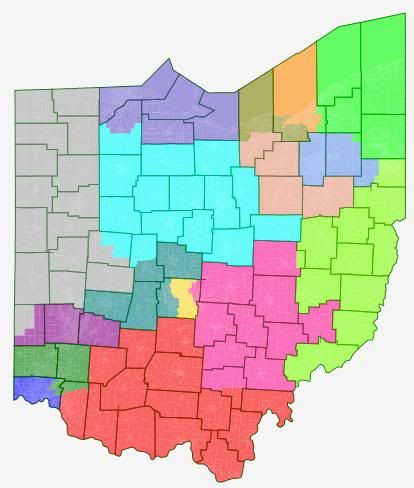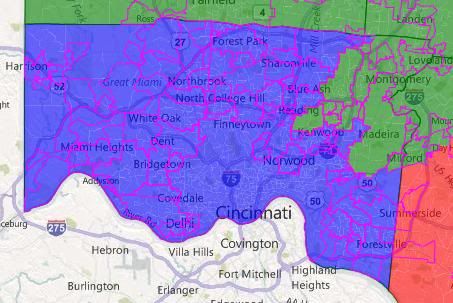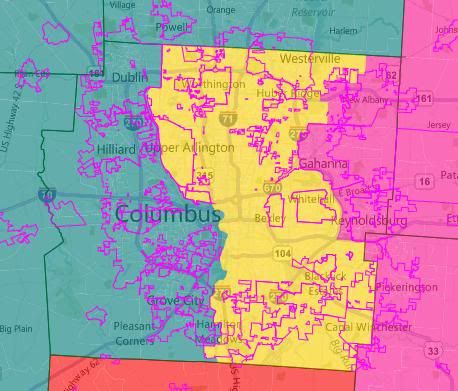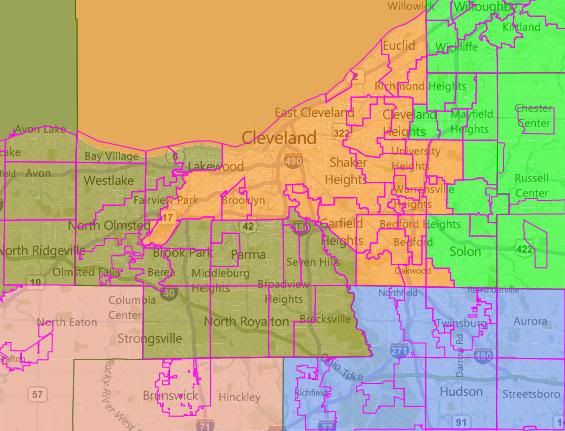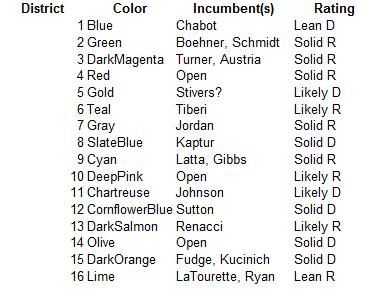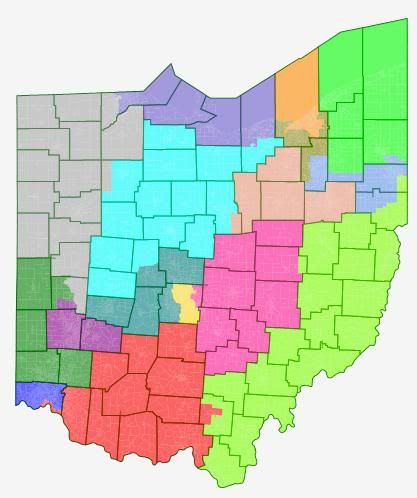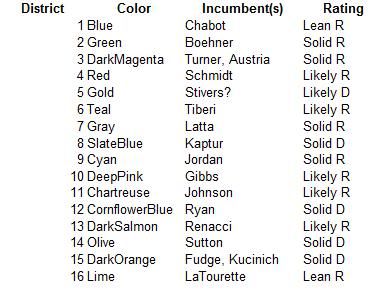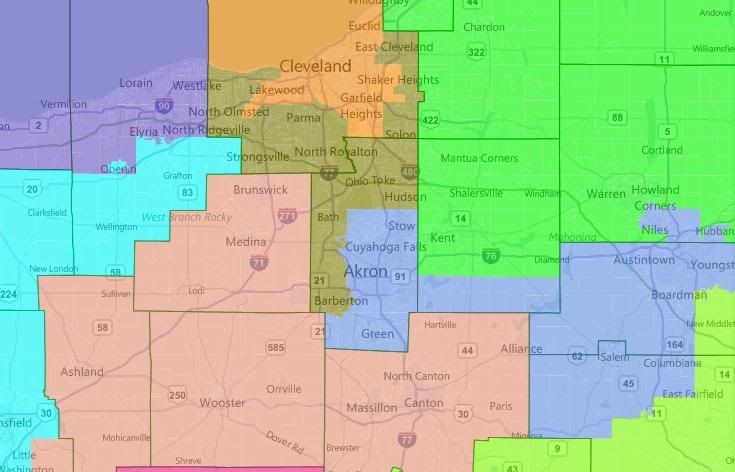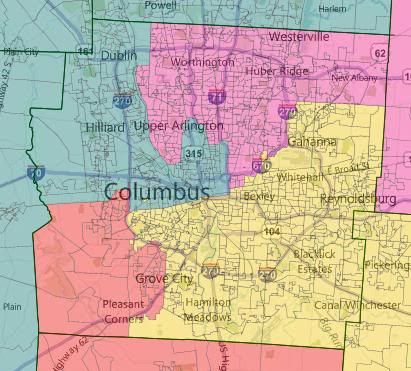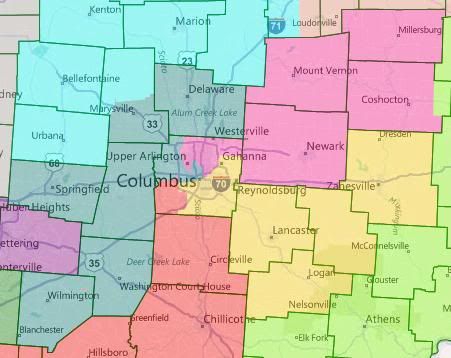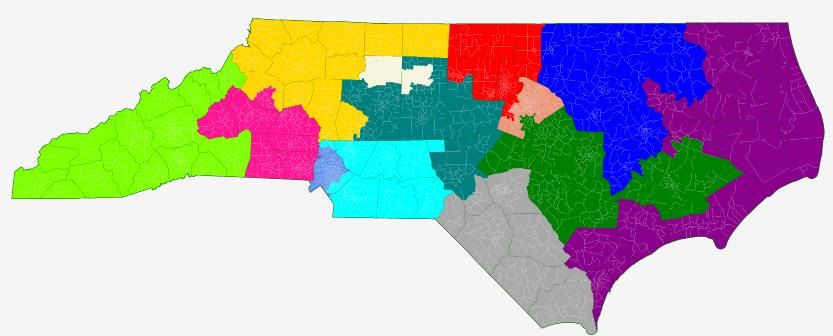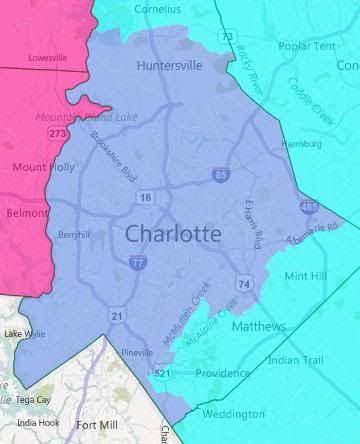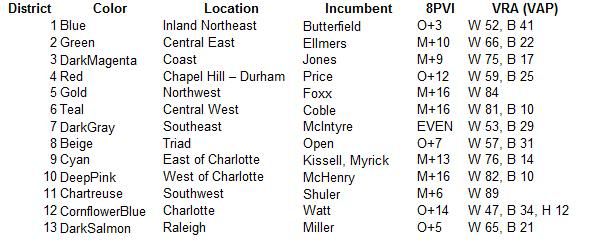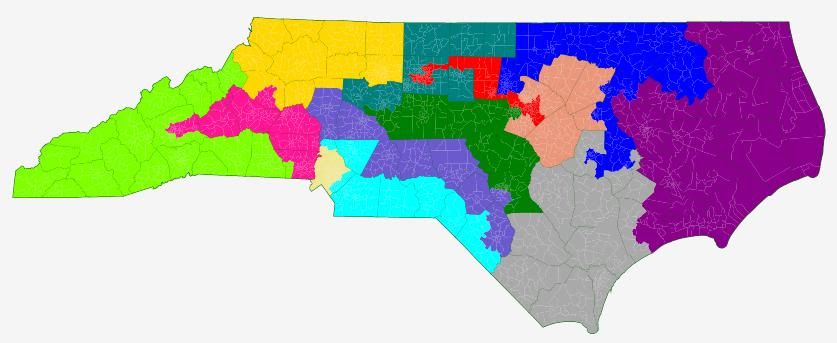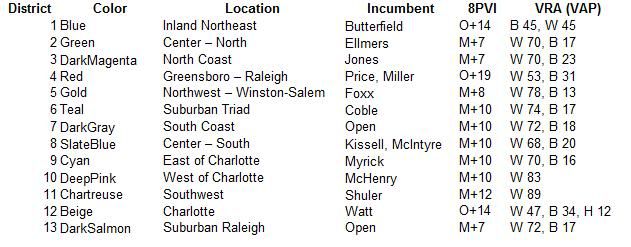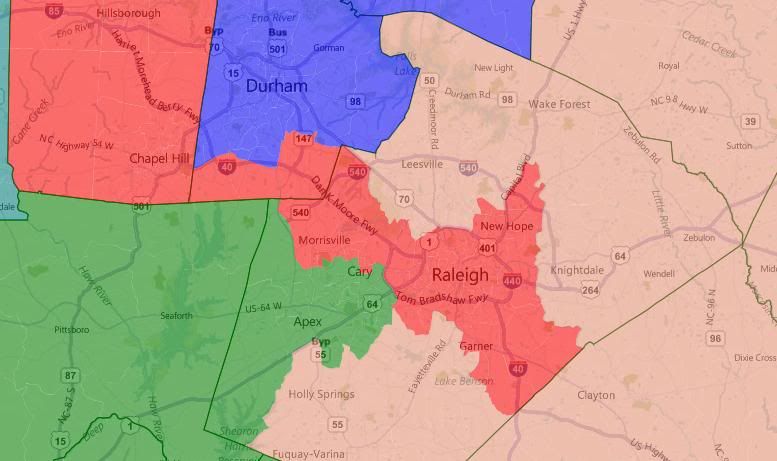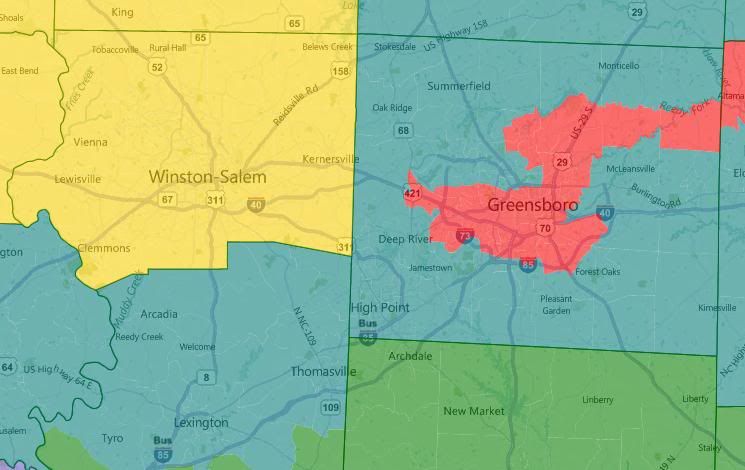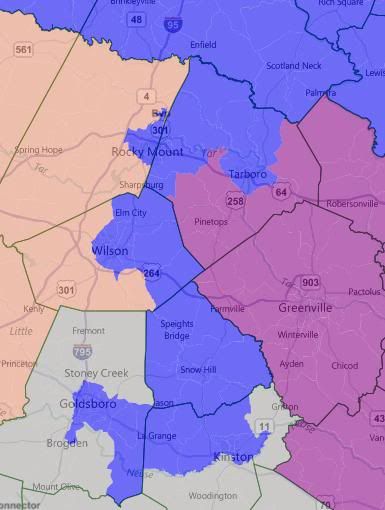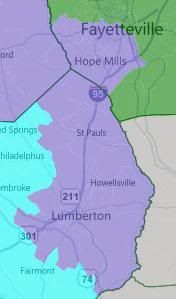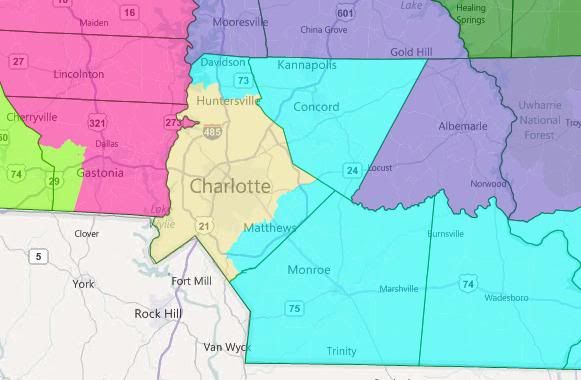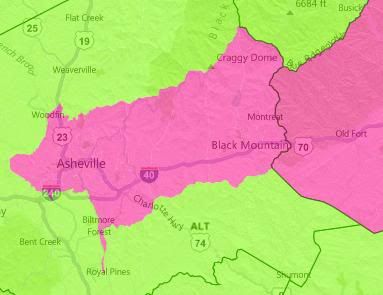There have been many fantastic maps drawn that highlight the potential extremes of gerrymandering, from both political parties. I humbly submit my attempt at making a safe 5-2 map in Colorado that will endure even in bad years for us. Now, I know that either a compromise map or a court-picked one is likely due to the split control in the Colorado legislature, this is purely a what-if scenario if Democrats ran the process and were very aggressive.
Also, this is my first time using Dave’s redistricting app and I would appreciate comments and helpful criticism.
My goals were difficult. Colorado is historically a Republican-leaning state and though our statewide ticket did great in 2010, we lost two of our five incumbent representatives. The red counties simply got redder, but there is reason for optimism at the way some other areas of Colorado have trended, in particular the Denver area and suburbs, Boulder, and Fort Collins.
I started with this map as a baseline for what to expect in a tough election, that of the 2004 presidential race where Kerry lost Colorado by 5%, and compared that to Obama’s easy win in 2008.
Massive swings across the state, with the most impressive being those in the corridor from Colorado Springs, up to the top of the state. Several counties flipped to blue in a big way…Larimer, Jefferson, and Arapahoe being the most significant I think for long-term Democratic strength in Colorado.
So it was my goal to build on the emerging Democratic strength in those areas, make two GOP vote sinks by combining Mike Coffman’s and Doug Lamborn’s districts, as well as Cory Gardner’s and Scott Tipton’s districts, and leave the rest reasonably safe for us. Here goes:



In short, I looked to the maps being proposed by Colorado legislature Democrats for inspiration (primarily in what I did with CO-05, CO-06, and CO-07), and then read a number of good ideas in the comments that I tried to incorporate.
The maps proposed by Democrats in the legislature are good, and more or less ensure a 4-3 split for us by turning CO-06 into a Democratic district. But they don’t budge the needle much in CO-03 or CO-04, leaving both as winnable, but still Republican-favored. Such is the nature of compromise and preparing to win should they go to court. I am free from such concerns.
1st-Dark Blue: (DeGette). Tradition seems to favor keeping the oddly shaped Denver county as whole as possible in this district, but I clipped the northern parts, and moved this district more to the south, eating up a portion of Arapahoe County and even getting into the northern-most parts of GOP stronghold Douglas county. It certainly drops at least 10 points worth of Democratic performance, but this doesn’t come close to being competitive. The bulk of the district is in precincts Obama was hitting 70% in. There’s simply no reason to waste so many Democratic votes in CO-01. Stats: 67% White, 6% Black, 21% Hispanic, 4% Asian (old: 52% W, 9% B, 33% H, 4% A).
2nd-Green: (Polis). State Democrats were already looking to expand this Boulder-based district out to grab more physical area than it has now. Instead of sending him out to Grand Junction, I had him go north to take Larimer County (home of Fort Collins) which Obama won by 10%. This is still a very safe Democratic district, and by depriving CO-04 of it’s biggest current county, I am able to do other fun things. Stats: 81% W, 1% B, 13% H, 3% A (old: 79% W, 1% B, 15% H, 3% A).
3rd-Light Blue: (no incumbent). There’s Dem-leaning Pueblo, all by itself down there in the current CO-03, and the proposed Dem maps take GOP-stronghold Grand Junction out but put in a bunch of red counties currently in CO-04 and CO-05 that still makes it hard for us. I simply chose to have it go for the ski counties instead, and turned this into a district I’m sure Obama won by a good margin. Since the Dem maps already attempt to split El Paso county this time, I figured I might as well follow suit, and sent a finger up to grab a bunch of majority-minority precincts in southern Colorado Springs. Even if that is not politically likely, just by removing all the ultra-red counties along the western border, and substituting them for central ski counties, we should be able to make a Democratic seat. Stats: 69% W, 3% B, 24% H, 1% A (old: 75% W, 1% B, 22% H).
4th-Red: (Gardner and Tipton). Now the fun begins. By removing Fort Collins from CO-04, it must seek additional population, so I simply had it run around the perimeter of the state and go up through the conservative counties of the current CO-03, in effect combining both districts to make an ultra-GOP vote sink, based in Greeley and Grand Junction. Yeah it looks bad, but hey the Republicans are always complaining that the rural counties don’t get a voice…here’s your dream district! Stats: 75% W, 1% B, 20% H (old: 79% W, 1% B, 17% H).
5th-Yellow: (Lamborn and possibly Coffman). An idea I borrowed from the legislature Democrats. Why have two solid GOP districts along the I-25 when the districts can be narrowed and combined into an ultra-GOP vote sink? Coffman doesn’t live in this district but unfortunately for him most of the current CO-06 is here, including his best performing areas in Douglas County. He could try to run in the new Aurora-based 7th but he would get destroyed. My guess is he would seek other office or retire. He wouldn’t be the first guy to see his district evaporate. Stats: 79% W, 3% B, 11% H, 3% A (old: 77% W, 6% B, 11% H, 2% A).
6th-Purple: (no incumbent). Also basically copied from the proposed maps. Changes from an exurban GOP stronghold south of Denver into an east suburban Aurora district. Contains swingy areas in the south, but the northern half of this district contains some of the most heavily minority precincts in the state…Coffman has no chance in this district, no Republican does. It skips across a few county lines, but it’s fairly compact compared to the oddly-shaped current CO-07 that contains a lot of this area right now. Stats: 51% W, 12% B, 29% H, 5% A (old: 88% W, 2% B, 6% H, 3% A).
7th-Orange: (Perlmutter). Drops most of the eastern Aurora-based earmuff and settles into a nice compact Jefferson County based district. The location plays to Perlmutter’s strength in Jefferson but even if he leaves, the pieces in Denver and Adams county ensure it will stay blue. Stats: 68% W, 1% B, 25% H, 3% A (old: 69% W, 6% B, 20% H, 3% A).

























